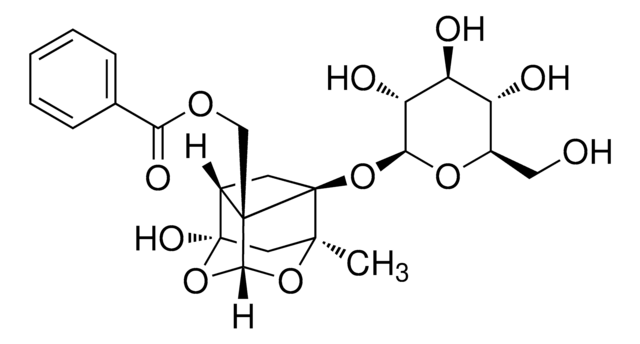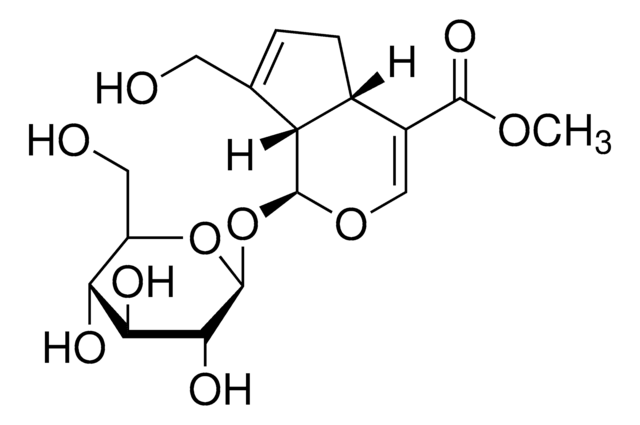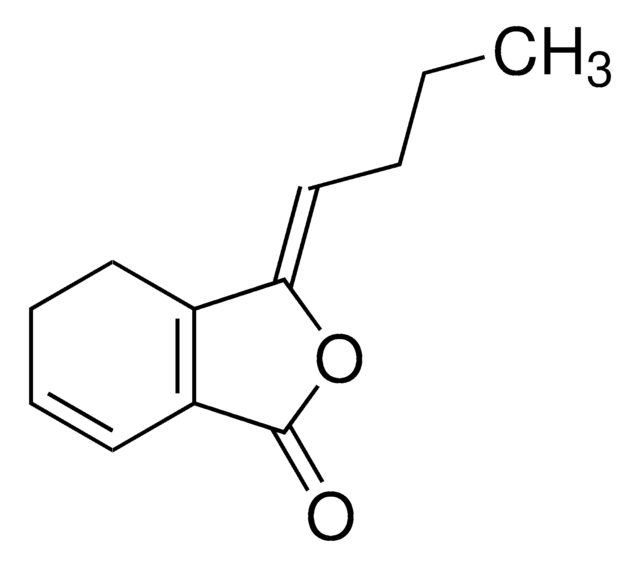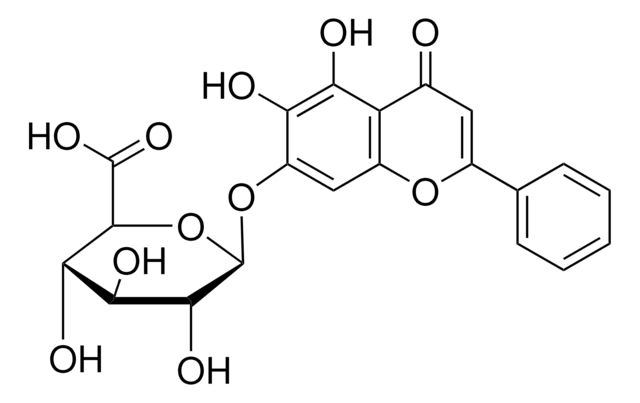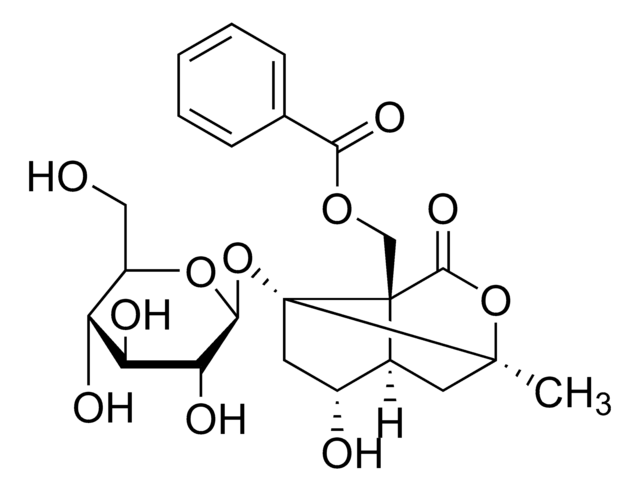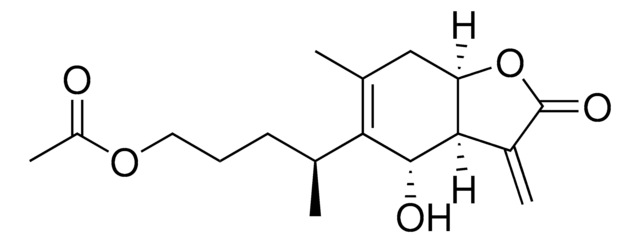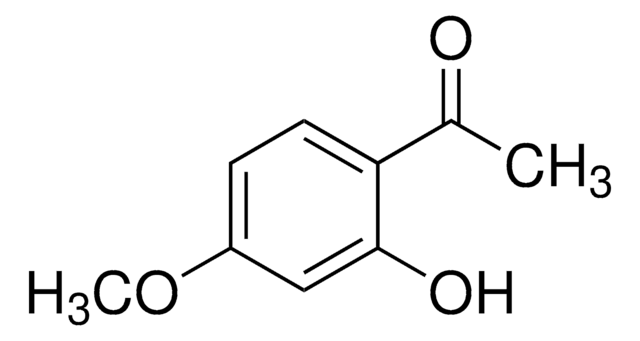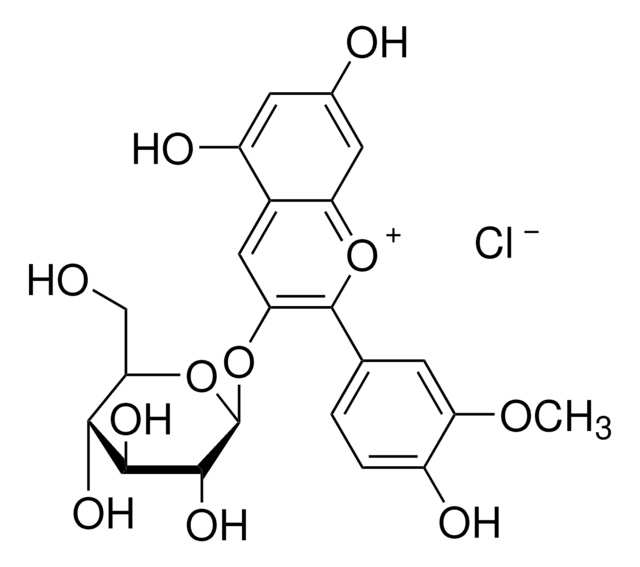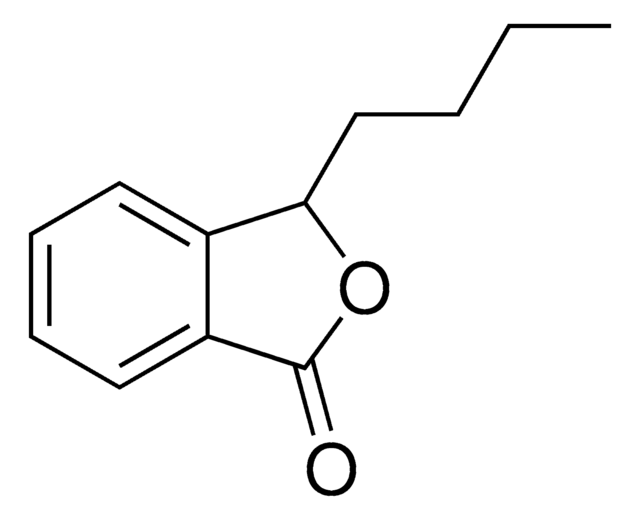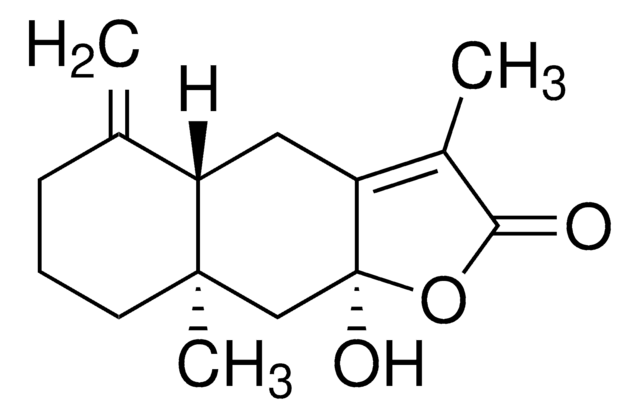P0038
Paeoniflorin
≥98% (HPLC)
Sinônimo(s):
NSC 178886, Peoniflorin
About This Item
Produtos recomendados
fonte biológica
plant (Paeonia Albiflora)
Ensaio
≥98% (HPLC)
Formulário
powder
técnica(s)
HPLC: suitable
Impurezas
<3.0% water (Karl Fischer)
cor
white
solubilidade
water: insoluble
temperatura de armazenamento
2-8°C
cadeia de caracteres SMILES
C[C@@]12C[C@@]3(O)O[C@@H](O1)[C@]5(COC(=O)c4ccccc4)[C@H]3C[C@]25O[C@@H]6O[C@H](CO)[C@@H](O)[C@H](O)[C@H]6O
InChI
1S/C23H28O11/c1-20-9-22(29)13-7-23(20,32-18-16(27)15(26)14(25)12(8-24)31-18)21(13,19(33-20)34-22)10-30-17(28)11-5-3-2-4-6-11/h2-6,12-16,18-19,24-27,29H,7-10H2,1H3/t12-,13-,14-,15+,16-,18+,19-,20+,21+,22-,23+/m1/s1
chave InChI
YKRGDOXKVOZESV-WRJNSLSBSA-N
Procurando produtos similares? Visita Guia de comparação de produtos
Descrição geral
Aplicação
Ações bioquímicas/fisiológicas
Outras notas
Código de classe de armazenamento
11 - Combustible Solids
Classe de risco de água (WGK)
WGK 3
Ponto de fulgor (°F)
Not applicable
Ponto de fulgor (°C)
Not applicable
Escolha uma das versões mais recentes:
Já possui este produto?
Encontre a documentação dos produtos que você adquiriu recentemente na biblioteca de documentos.
Os clientes também visualizaram
Nossa equipe de cientistas tem experiência em todas as áreas de pesquisa, incluindo Life Sciences, ciência de materiais, síntese química, cromatografia, química analítica e muitas outras.
Entre em contato com a assistência técnica